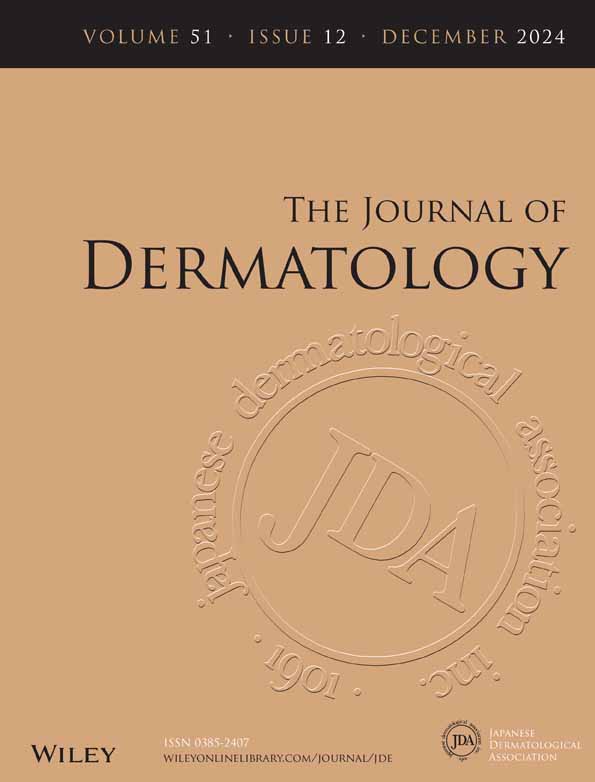Simultaneous distinct cutaneous fungal infections with chromoblastomycosis due to Exophiala xenobiotica and hyalohyphomycosis due to Scedosporium apiospermum in a patient with severe cellular immunodeficiency
Abstract
Deep-seated dermatomycosis is a rare disease that is often caused by trauma and/or systemic immunodeficiency. We describe a case of chromoblastomycosis complicated by hyalohyphomycosis that occurred simultaneously at different sites. A 92-year-old Japanese man who had been taking oral prednisolone for an IgG4-related respiratory disease visited our clinic. He developed brownish plaques with grayish-white scales with pseudo-carcinomatous hyperplasia and numerous brownish muriform cells developing in the dermis of his right hand, and multiple painful abscesses with pustules and papules and numerous hyphae within and around the histiocytes in the dermis of his right lower leg. Upon skin tissue culture and DNA sequencing, Exophiala xenobiotica and Scedosporium apiospermum were detected separately. He had severe cellular immunodeficiency indicated by low levels in the phytohemagglutinin (PHA)-stimulated lymphocyte transformation test (LTT) and serum interferon-gamma (IFN-γ), although his humoral immunity was normal. The patient died of bacterial pneumonia, despite antifungal drug treatment for 2 months. IFN-γ producing type 1 T helper (Th1) cells play an important role in the defense against fungal infections, however, corticosteroids specifically suppress Th1 cell responses and promote the induction of fungal infection. Measurement of PHA-stimulated LTT and serum IFN-γ may be useful in determining the severity and prognosis of deep-seated dermatomycosis in patients undergoing corticosteroid treatment.
CONFLICT OF INTEREST STATEMENT
None declared. Yumi Aoyama is an Editorial Board member of The Journal of Dermatology and a co-author of this article. To minimize bias, he was excluded from all editorial decision-making related to the acceptance of this article for publication.




